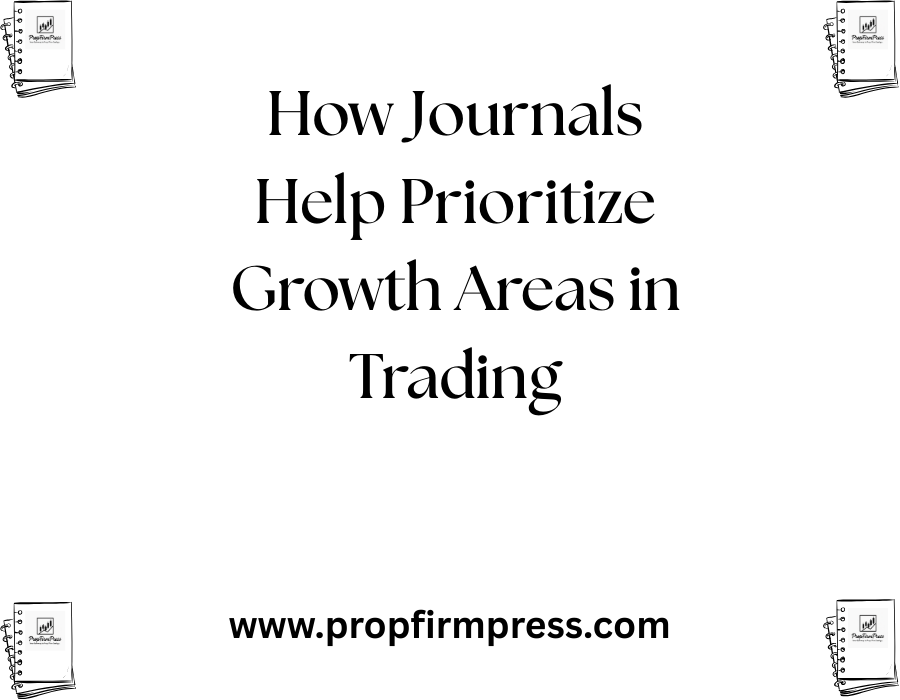How Journals Help Prioritize Growth Areas in Trading
Trading is not just about executing buy or sell orders; it’s a discipline rooted in continuous learning and self-improvement. To evolve as a trader, recognizing and addressing weaknesses is vital. One of the most effective tools for achieving this is journaling. Keeping a detailed trading journal enables traders to analyze their actions, decisions, and outcomes to pinpoint where growth is necessary. This article explores how journaling helps prioritize growth areas in trading, elevating your performance through focused efforts.
Identifying Patterns and Recurring Mistakes
Traders often make repeated errors unknowingly due to emotional biases, lack of discipline, or skill gaps. A journal serves as a factual record where every trade’s specifics—entry and exit points, rationale, and outcome—are documented. Over time, patterns emerge, unveiling consistent mistakes such as premature exits, overtrading, or ignoring stop-losses.
By reviewing these entries regularly, traders can identify their most frequent mistakes. This clarity narrows down what aspects require immediate improvement. Prioritizing these weak spots enables the development of targeted strategies, such as improving stop-loss discipline or managing position sizes more conservatively.
Enhancing Emotional Awareness and Control
Trading is emotionally demanding. Anxiety, fear, and greed can cloud judgment, resulting in poor decisions. Journaling provides a medium to capture the trader’s emotional state during each trade, helping to recognize how feelings influence decisions.
Tracking emotions alongside trade metrics helps uncover emotional triggers that lead to suboptimal trades. For example, a trader might notice increased impulsivity after losses or overconfidence after wins. By highlighting these emotional influences, journaling prioritizes emotional control as a key growth area, enabling traders to develop mindfulness techniques or employ risk management tools to mitigate emotional biases.
Measuring Strategy Effectiveness
Not every trading strategy fits every market condition or every trader’s personality. Keeping a detailed journal allows traders to evaluate which strategies consistently yield positive results and which don’t. By recording the context of each trade, such as market environment and time frames, traders can assess the effectiveness of various approaches.
This data-driven insight allows traders to prioritize refining or abandoning strategies that underperform. Journaling transforms subjective feelings about what “should” work into objective evidence, enabling traders to focus growth efforts on optimizing or developing high-probability strategies rather than wasting time on ineffective methods.
Tracking Progress and Setting Realistic Goals
Growth is meaningless without measuring progress. Journals act as benchmarks, showing a trader’s journey over weeks, months, and years. This historical record fosters accountability and motivation, as traders witness improvements or setbacks clearly documented.
Furthermore, reviewing journal data helps traders establish realistic, measurable goals. For instance, a trader may notice a 10% win rate improvement when following a certain entry technique, encouraging them to focus on mastering this technique to achieve further gains. Prioritizing goals based on journal insights leads to a more structured growth plan with achievable milestones tailored to individual strengths and weaknesses.
Improving Risk Management Practices
Risk management is a cornerstone for sustainable trading success yet is often overlooked or inadequately practiced. Journaling every trade’s risk-reward parameters, stop-loss placements, and position sizing brings awareness to risk management habits.
By analyzing this information, traders can identify tendencies such as risking too much per trade or neglecting to adjust position sizes based on market volatility. Journals highlight these flaws, directing growth efforts toward developing sound risk management practices. This prioritization minimizes potential losses and preserves capital, crucial for long-term consistency.
Facilitating Continuous Learning and Adaptation
The markets evolve, and so must traders. Journals foster a mindset of continuous learning by capturing insights, lessons, and hypotheses for future testing. When journaling is integrated as a daily habit, traders develop a feedback loop where each trade is a learning opportunity.
This proactive approach encourages traders to adapt strategies and behaviors based on empirical data instead of guesswork or emotions. Prioritizing learning and adaptation through journaling helps traders stay flexible and resilient in changing market conditions.
Increasing Discipline Through Accountability
Keeping a journal introduces a layer of accountability to the trading process. When trades and decisions are written down and reviewed, traders are less likely to deviate from their rules since every action is recorded.
Accountability helps identify deviations from trading plans or impulsive decisions that often undermine results. Journaling emphasizes discipline as a key growth area, driving traders to stick to predefined rules, which improves consistency and overall performance.
Enhancing Focus on Positive Behaviors
While identifying errors is crucial, journaling also highlights positive behaviors and successful trades. Recognizing what works boosts confidence and provides a template for consistent execution.
By prioritizing the reinforcement of positive habits such as following setups meticulously or maintaining patience, traders can build on their strengths while systematically grooming weaker aspects. This balanced approach to growth is sustainable and psychologically rewarding.
Utilizing Journaling Tools for Efficient Growth Prioritization
Modern trading journals come with features that facilitate deeper analysis, such as tagging, filtering, and automated statistics. These tools allow traders to quickly isolate growth areas by sorting trades based on timeframes, strategies, or outcomes.
Utilizing these functionalities enables traders to prioritize effort in the most impactful areas without getting overwhelmed by data. Investing time in a comprehensive journaling system with analytic capabilities ensures focused and efficient growth planning.
Encouraging Reflection for Long-Term Success
Journals encourage periodic reflection, a process of stepping back and evaluating trading performance over significant periods. Reflection helps traders see the bigger picture, recognize long-term trends, and adjust growth priorities accordingly.
Without journaling, traders may miss the forest for the trees—failing to connect daily actions with overall objectives. Structured reflection ensures growth efforts align with both immediate challenges and career-long aspirations.
